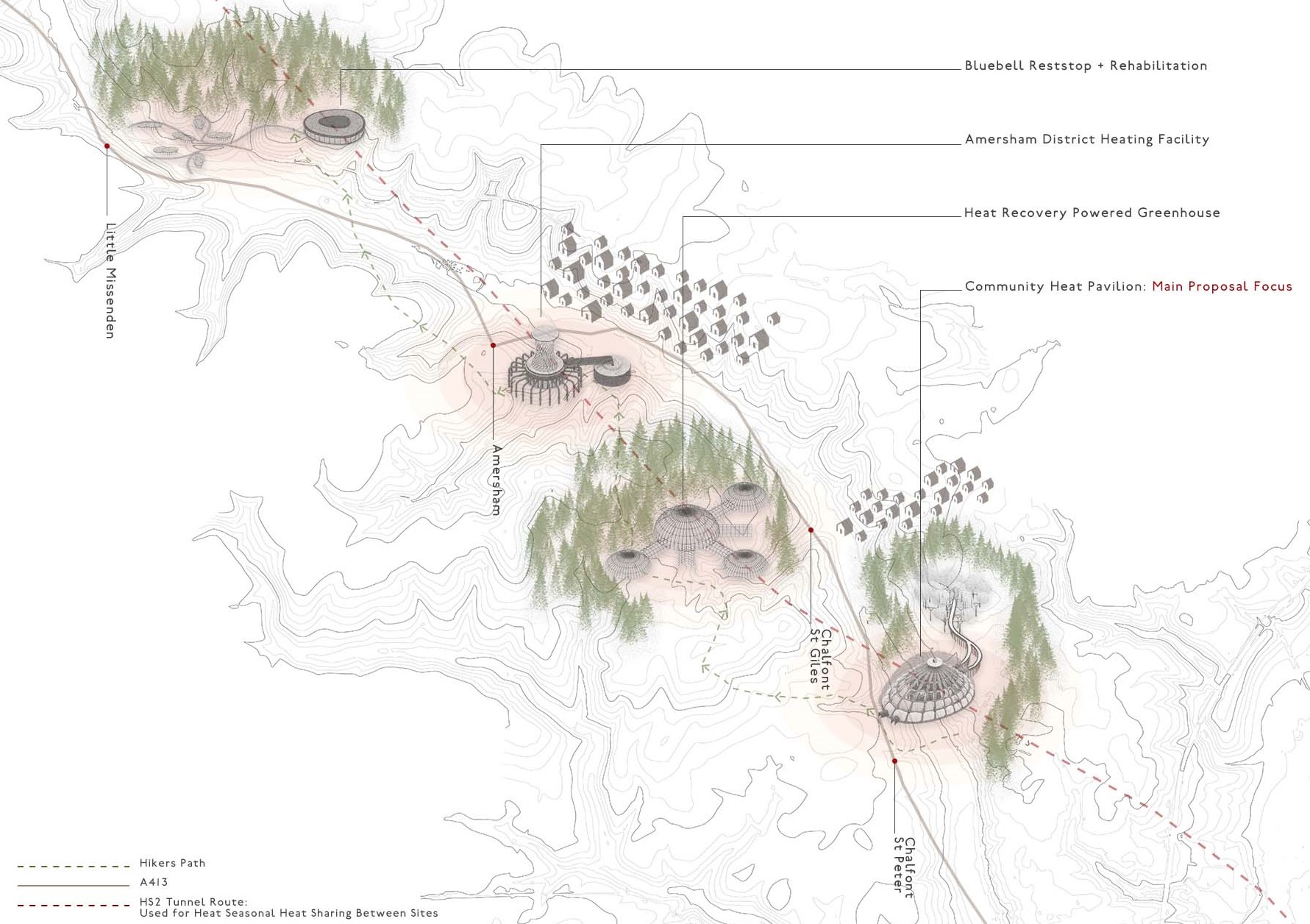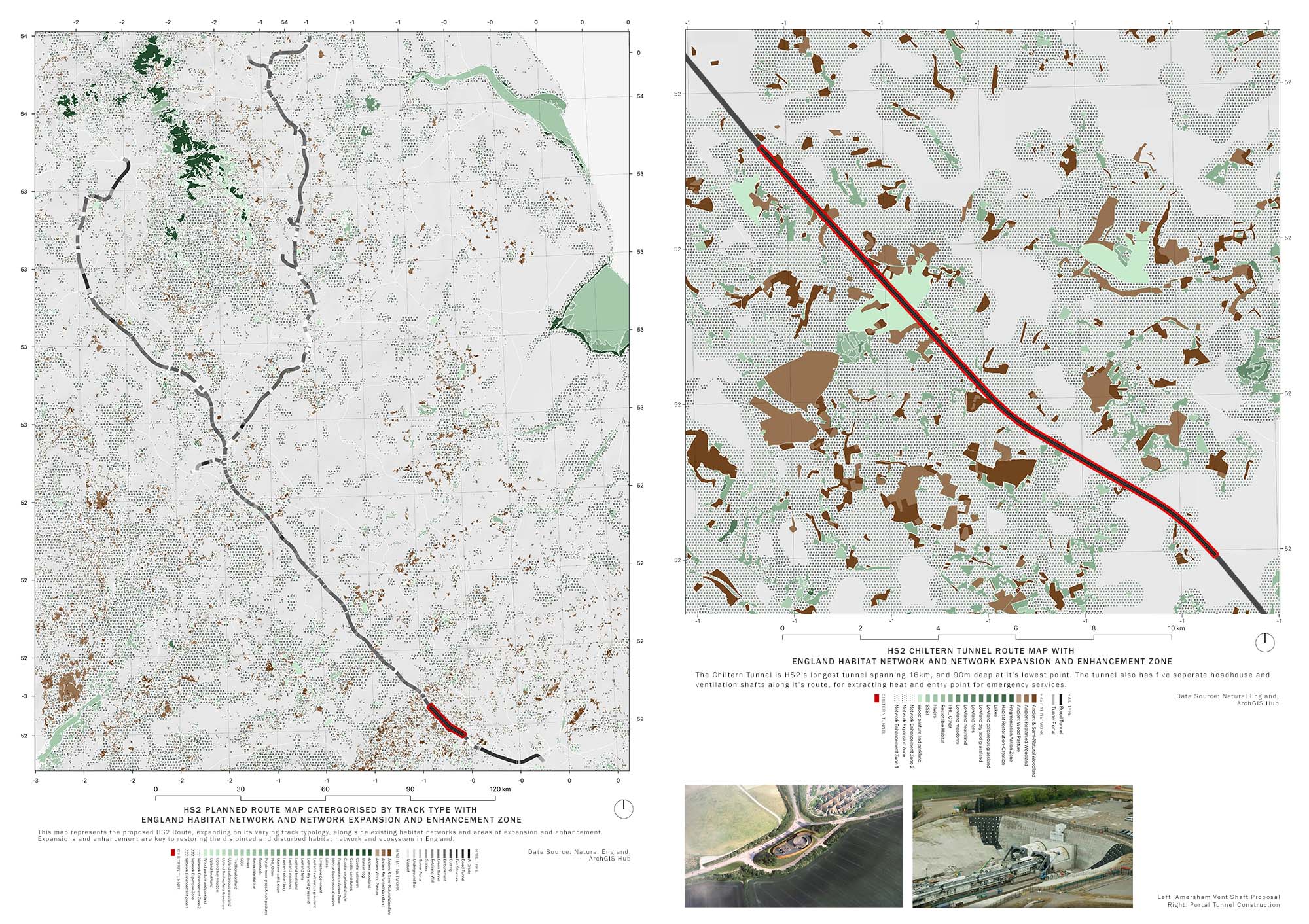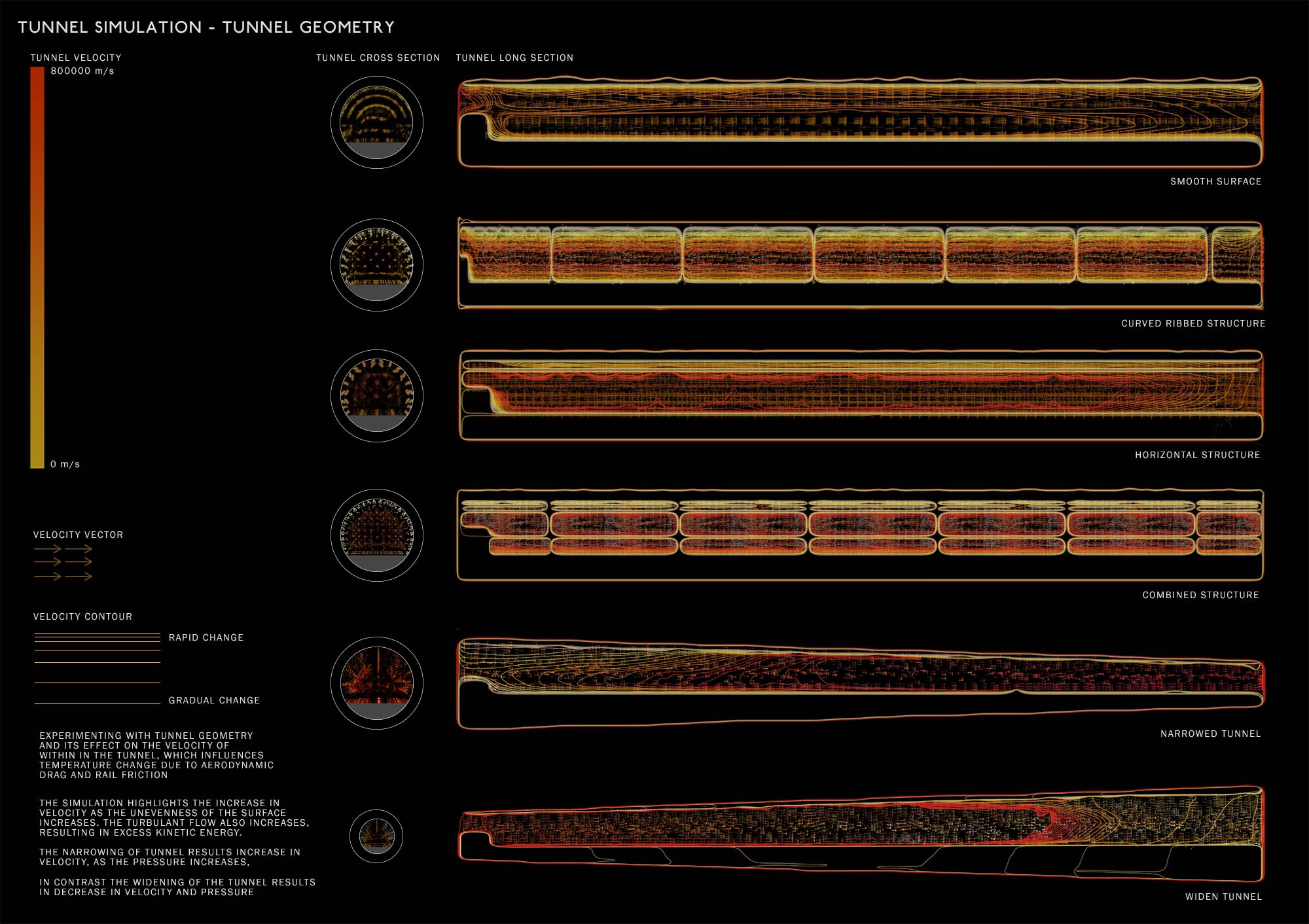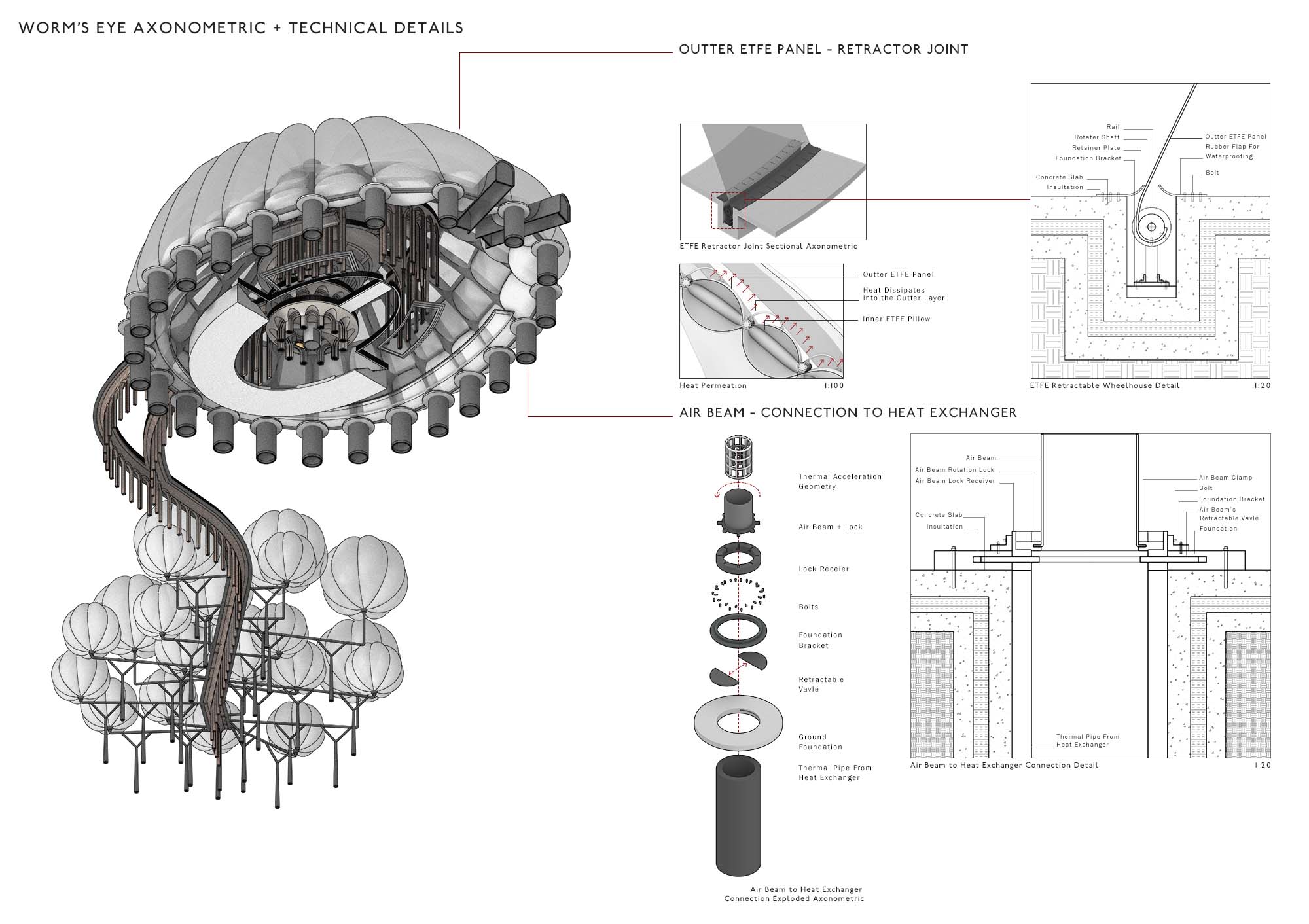Indy Saligupta
Year 2 MArch
High-Speed Heat Recovery
Chiltern Hills
Chalfont St Peter, Buckinghamshire, UK
The HS2 proposal, despite its economic, political, and environmental concerns, presents an opportunity to recover excess heat within its bored tunnels. The movement of passing trains generates heat through aerodynamic drag, air compression, brakes, and engine heat. This heat is trapped within the tunnels and can be harnessed for various purposes by converting it into energy.
The process of recovering excess heat offers a chance to address energy needs such as district heating, energy generation, biomass drying, greenhouse warming, wastewater treatment, and forest recovery. One significant component of the HS2 proposal is the Chiltern Tunnel, a 16-kilometre bored tunnel buried 90 meters deep in Buckinghamshire, between Chalfont St. Giles and Chesham. The tunnel includes five separate headhouses, with four serving as ventilation shafts to extract excess heat and provide entry points for emergency services. The focus of the proposal is on Chalfont St. Peter, the first ventilation shaft to the surface, where the Chiltern Hills Heat Recovery initiative will be implemented.
This approach serves as a proving ground for the implications of heat recovery in rail infrastructure. Within the current climate crisis, it explores a clean alternative means of energy production. Moreover, the proposal acts as a catalyst for transforming traditional rail vents into heat recovery centres. The modular design allows for easy adaptation and application to existing ventilation systems.
The architectural language employed in the project reflects the process of heat accumulation over time. The use of inflatable ETFEs (ethylene tetrafluoroethylene) creates a dynamic facade for the buildings, inflating and deflating with heat fluctuations, symbolizing the thermal energy exchange within the tunnels.








︎︎︎ Home
︎︎︎ Previous // Next ︎︎︎